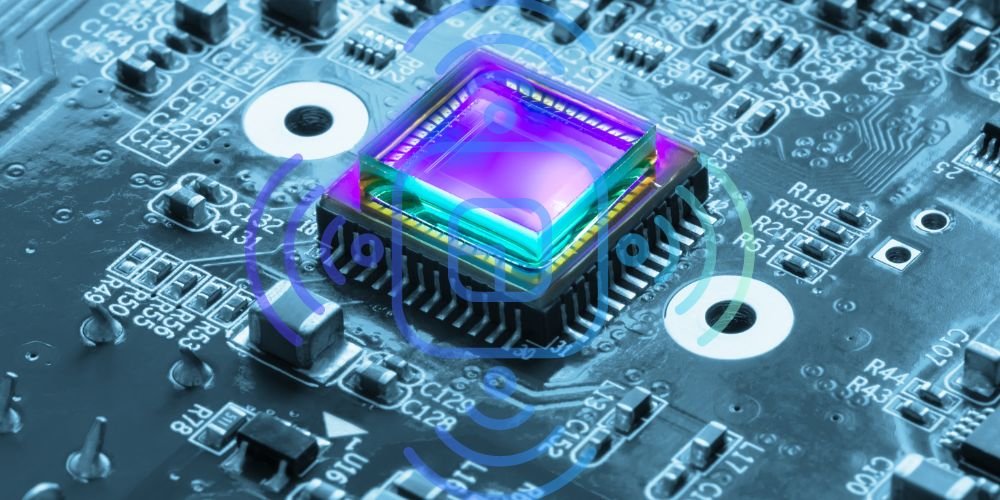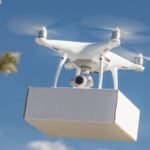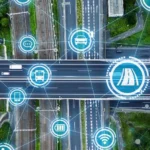Roadway sensors have emerged as a transformative solution in our ongoing efforts to optimize transportation, enhance road safety, reduce congestion, and promote sustainable mobility. It represents a pivotal shift towards data-driven and efficient traffic management in a world facing increasing urbanization and the challenges of managing complex transportation networks. This comprehensive exploration delves into roadway sensors, uncovering their significance, technological advancements, applications across various sectors, and their transformative potential for safer, smarter, and more sustainable transportation systems.
The Significance of Roadway Sensors
Roadway sensors signify a fundamental change in monitoring and managing transportation networks. As cities grow, traffic volumes increase, and transportation infrastructure ages, these sensors play a crucial role in collecting real-time data, enabling data-driven decisions, and improving overall transportation efficiency.
Real-Time Traffic Monitoring
One of the primary benefits of roadway sensors is their ability to provide real-time traffic monitoring. These sensors, often embedded in the road surface or installed on traffic signs and signals, collect data on vehicle counts, speeds, and congestion levels. This data allows transportation authorities to respond quickly to traffic incidents, adjust signal timings, and reroute traffic, ultimately reducing congestion and improving the daily commute for millions.
Enhancing Road Safety
Roadway sensors are instrumental in enhancing road safety. They can detect adverse weather conditions, slippery road surfaces, and accidents. This information can trigger automated safety measures, such as activating warning signs, reducing speed limits, or notifying emergency services. These measures reduce the likelihood of accidents and improve overall road safety.
Smart Traffic Management
Roadway sensors are at the heart of smart traffic management systems. They enable traffic signals to adapt in real-time to changing traffic conditions, prioritize public transportation, and create green waves for smoother traffic flow. Smart traffic management reduces travel times and minimizes fuel consumption and emissions, contributing to sustainability goals.
Advanced Technologies in Roadway Sensors
Roadway sensors rely on various advanced technologies to collect and transmit data efficiently.
Inductive Loop Sensors
Inductive loop sensors are embedded in the road surface and use electromagnetic fields to detect the presence of vehicles. When a vehicle passes over the loop, changes in the field are detected, allowing the sensor to register the vehicle’s presence and speed.
Infrared and Microwave Sensors
Infrared and microwave sensors are often used for vehicle and traffic detection. They emit signals that bounce off vehicles and return to the sensor. These sensors can determine vehicle speed, size, and direction by measuring the time it takes for the signal to return.
Video Cameras
Video cameras mounted on traffic signals or overhead structures capture real-time images of traffic. Computer vision algorithms can analyze these images to identify vehicles, measure traffic density, and detect unusual events, such as accidents or debris on the road.
Connected Vehicle Technology
Connected vehicle technology allows vehicles to communicate with roadside infrastructure, including roadway sensors. It enables features like vehicle-to-infrastructure (V2I) communication to inform drivers of upcoming traffic conditions, provide recommendations for safe and efficient driving, and enhance overall traffic management.
Applications of Roadway Sensors
Roadway sensors find applications across various sectors, benefiting from improved traffic management and safety.
Urban Transportation
Roadway sensors are indispensable for managing complex traffic intersections and reducing congestion in densely populated urban areas. These sensors enable adaptive signal control, prioritize public transportation, and improve overall traffic flow.
Public Transportation
Public transportation systems like buses and light rail benefit from roadway sensors by reducing delays and improving schedule adherence. It enhances the attractiveness of public transit and encourages its use as a sustainable transportation option.
Freight and Logistics
The freight and logistics industry relies on efficient transportation networks. It helps optimize freight movement, reduce delivery times, and minimize fuel consumption, contributing to cost savings and environmental sustainability.
Emergency Services
Roadway sensors are crucial for emergency services. They can detect accidents, traffic incidents, and adverse road conditions, allowing emergency responders to reach their destinations quickly and safely.
Challenges and Ethical Considerations
While roadway sensors hold immense promise, they also present challenges and ethical considerations that require careful attention.
Data Privacy and Security
The collection and use of transportation data raise concerns about data privacy and security. Protecting sensitive information and ensuring secure data transmission are essential. Ethical considerations include transparent data handling practices and safeguarding individuals’ privacy.
Equity and Access
Ensuring equitable access to the benefits of roadway sensors is essential. Efforts must be made to address disparities in sensor deployment between urban and rural areas, underserved communities, and economically disadvantaged regions. Ethical considerations include making these technologies accessible to all, regardless of socio-economic status or geographic location.
Data Ownership and Control
Determining who owns and controls the data collected by roadway sensors is a significant ethical consideration. Balancing the interests of transportation authorities, private companies, and the public is a complex challenge.
The Future of Roadway Sensors
Roadway sensors are poised to assume an even more substantial role in shaping the future of transportation, fostering safety, sustainability, and innovation.
Autonomous Vehicles Integration
As autonomous vehicles become more prevalent, it will be crucial to coordinate their movements and ensure safe interactions with human-driven vehicles. These systems must communicate effectively with autonomous vehicles to facilitate safe and efficient transportation.
Smart Cities Integration
Roadway sensors will be integrated into broader smart city initiatives, allowing seamless coordination between transportation, infrastructure, and data systems. This holistic approach will result in more efficient and sustainable urban environments where transportation is an integrated and data-driven part of daily life.
Environmental Sustainability
The future of roadway sensors will place an even greater emphasis on environmental sustainability. These systems will be designed to reduce further energy consumption, emissions, and their overall environmental footprint. Sustainable materials and energy-efficient technologies will play a significant role in shaping the future of roadway sensors.
Conclusion
Roadway sensors are not just a technological innovation but a fundamental shift toward safer, smarter, and more sustainable transportation systems. Their significance lies in their capacity to provide real-time data, enhance road safety, and improve overall transportation efficiency. As roadway sensors continue to evolve, ethical considerations, data privacy, and equitable access must guide their development and deployment.
The future they envision is one where transportation is data-driven, efficient, and in harmony with sustainability principles. They are the architects of a future where transportation is safer, smarter, and more sustainable, benefiting communities worldwide.












